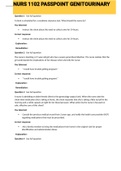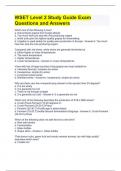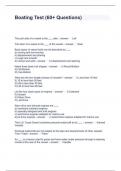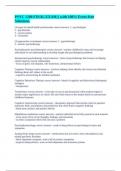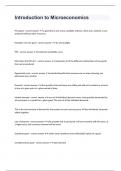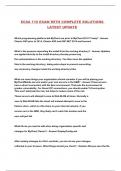An Exact Maternal-Fetal Genotype Incompatibility (MFG) Test
Sonia L. Minassian,1 Christina G.S. Palmer,2 and Janet S. Sinsheimer1,3,4n
1
Department of Biostatistics, University of California, Los Angeles, California
2
Department of Psychiatry and Biobehavioral Sciences, University of California, Los Angeles, California
3
Department of Human Genetics, University of California, Los Angeles, California
4
Department of Biomathematics, University of California, Los Angeles, California
The maternal-fetal genotype incompatibility (MFG) test can be used for a variety of genetic applications concerning disease
risk in offspring including testing for the presence of alleles that act directly through offspring genotypes (child allelic
effects), alleles that act through maternal genotypes (maternal allelic effects), or maternal-fetal genotype incompatibilities.
The log-linear version of the MFG model divides the genotype data into many cells, where each cell represents one of the
possible mother, father, and child genotype combinations. Currently, tests of hypotheses about different allelic effects are
accomplished by an asymptotic MFG test, but it is unknown if this is appropriate under conditions that produce small cell
counts. In this report, we develop an exact MFG test that is based on the permutation distribution of cell counts. We
determine by simulation the type I error and power of both the exact MFG test and the asymptotic MFG test for four
different biologically relevant scenarios: a test of child allelic effects in the presence of maternal allelic effects, a test of
maternal allelic effects in the presence of child allelic effects, and tests of maternal-fetal genotype incompatibility with and
without child allelic effects. These simulations show that, in general, the exact test is slightly conservative whereas the
asymptotic test is slightly anti-conservative. However, the asymptotic MFG test produces significantly inflated type I error
rates under conditions with extreme null allele frequencies and sample sizes of 75, 100, and 150. Under these conditions, the
exact test is clearly preferred over the asymptotic test. Under all other conditions that we tested, the user can safely choose
either the exact test or the asymptotic test. Genet. Epidemiol. 28:83–95, 2005. & 2004 Wiley-Liss, Inc.
Key words: maternal-fetal interaction; gene-environment interaction; permutation test; small sample test; maternal
effects; randomization test; gene-gene interaction; association test
Grant sponsor: United States Public Health Service; Grant numbers: MH59490, MH66001, T32-HG02536.
n
Correspondence to: Janet Sinsheimer, Ph.D., AV-617 Center for Health Sciences, Dept of Biomathematics, UCLA School of Medicine,
Los Angeles, CA 90095-1766. E-mail:
Received for publication 23 April 2004; Accepted 7 July 2004
Published online 14 September 2004 in Wiley InterScience (www.interscience.com)
DOI: 10.1002/gepi.20027
INTRODUCTION Assessment of the significance of effects has
relied on the MFG test statistic distribution’s
The MFG test and other family-based associa- asymptotic equivalence to a chi-square distribu-
tion tests are useful for a wide array of statistical tion. Because the chi-square distribution can be a
genetic analyses including identification of dis- poor approximation, for example in the case of the
ease risk alleles that act directly through offspring distribution of the TDT test statistic [Schaid, 1996;
genotypes to increase disease risk (child allelic Lazzeroni and Lange, 1998; Whittaker and
effects) [e.g., Schaid and Sommer, 1994; Spielman Thompson, 1999], it is important to critically
and Ewens, 1996; Horvath et al., 2001], identifica- examine the type I error rate of the asymptotic
tion of alleles that act through maternal genotypes MFG test. The validity of the asymptotic approx-
to increase offspring disease risk (maternal allelic imation to the MFG test statistic distribution has
effects) [Weinberg et al., 1998; Wilcox et al., 1998; been examined through simulations [e.g., Schaid
Umbach and Weinberg, 2000], and identification and Sommer, 1993; Weinberg, 1999; Sinsheimer
of maternal-fetal genotype incompatibilities that et al., 2003; Cordell et al., 2004; Cordell, 2004]. The
increase offspring disease risk [Sinsheimer et al., simulation results suggest that the significance
2003; Kraft et al., 2004; Cordell et al., 2004; Cordell, values produced by the asymptotic MFG test are
2004]. reasonable at least for the conditions studied.
& 2004 Wiley-Liss, Inc.
, 84 Minassian et al.
These examinations, however, have been limited Because data are divided across a relatively large
to a significance level of 0.05, to a single set of risk number of cells, some cells will have only a few
allele frequencies, and, when examining the or zero counts if the sample size is small or
maternal-fetal genotype incompatibility effect, if one of the allele frequencies is small.
large sample sizes [Sinsheimer et al., 2003; Cordell Under these conditions, an exact test may be
et al., 2004]. particularly warranted as an asymptotic test can,
In principle, determining significance using the in principle, produce inaccurate estimates of
exact distribution of the test statistic should be significance.
preferred to making an asymptotic approximation In the following section, the model and asymp-
to the distribution. Exact tests have been devel- totic MFG test are briefly described. Next, the
oped to test for disease-associated child allelic exact MFG test and corresponding permutation
effects [e.g., Cleves et al., 1997; Morris et al., 1997; schema are introduced for four different hypoth-
Lazzeroni and Lange, 1998; Whittaker et al., 1999; eses about model parameters: scenario (1) child
Dudbridge, 2003]. We are unaware of any exact allelic effects in the presence of maternal allelic
tests that can be used to test for maternal allelic effects; scenario (2) maternal allelic effects in the
effects or maternal-fetal genotype incompatibil- presence of child allelic effects; scenario (3)
ities that increase offspring disease risk. The maternal-fetal genotype incompatibility assuming
purpose of this report is to develop an exact no additional risk factors; and scenario (4)
MFG test and to evaluate both the exact test and maternal-fetal genotype incompatibility in the
asymptotic MFG test under a variety of condi- presence of child allelic effects. We conduct
tions. simulation studies to evaluate the asymptotic
We begin with the log-linear version of the MFG and exact MFG tests. We examine the effects of
test that has been used to infer the presence of varying allele frequency and sample size on type I
various genetic effects through asymptotic like- error and power of both tests.
lihood ratio tests (LRT) [Sinsheimer et al., 2003].
The MFG test is a generalization of the log-linear
model developed by Weinberg and colleagues METHODS
[Weinberg et al., 1998]. Both models use genotype
data from parents and a single affected child to ASYMPTOTIC MFG TEST
test hypotheses about the role of a gene in disease. Consider a locus with two alleles: D (the risk
For a given locus, all possible mother, father, and allele) and d (the null allele). If symmetric mating
child genotype trios are delineated, producing a is assumed, then each mother, father, and af-
specific number of cells into which observed trios fected-child trio can be categorized into one of six
can be classified. The number of cells is a function mating types and into fifteen distinct cells that are
of the number of alleles; a bi-allelic locus produces summarized in Table I. The most general case-
15 genotype trio combinations and a tri-allelic parent trio log-linear model we will consider is the
locus produces 78 genotype trio combinations. MFG model with eleven parameters: d1, d2, d3, d4,
TABLE I. Case-parent trio combinations and expected trio counts for the general MFG model with a bi-allelic locus
Cell Mating type Mother, father genotype Child genotype Expected counts
1 1 D/D, D/D D/D Z2r2d1
2 2 D/D, D/d D/D Z2r2d2
3 2 D/D, D/d D/d Z2r1d2
4 2 D/d, D/D D/D Z1r2d2
5 2 D/d, D/D D/d Z1r1d2
6 3 D/D, d/d D/d Z2r1d3
7 3 d/d, D/D D/d mr1d3
8 4 D/d, D/d D/D Z1r2d4
9 4 D/d, D/d D/d 2Z1r1d4
10 4 D/d, D/d d/d Z1d4
11 5 D/d, d/d D/d Z1r1d5
12 5 D/d, d/d d/d Z1d5
13 5 d/d, D/d D/d mr1d5
14 5 d/d, D/d d/d d5
15 6 d/d, d/d d/d d6

